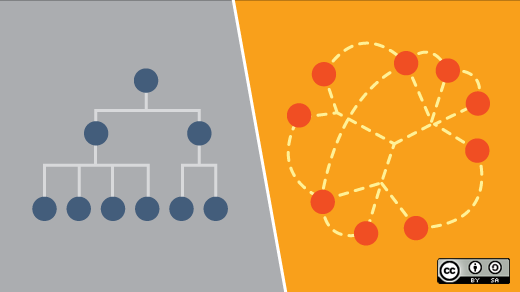Enterprises learned an important lesson on their way to embracing open source software: they could benefit from work that came from outside of their own rosters of employees. Now businesses are beginning to recognize that open source lessons apply beyond software development, and they are finding new ways to seek out talent beyond their walls.
It’s a trend that is transforming the workplace as we know it, as documented in a recent Deloitte publication, "The Open Talent Economy."
This movement rests on the recognition that the community and the company have a shared goal in pushing the ball forward, and that new ideas can only be a good thing. It promises to make enterprises more responsive to the desires of users, and more flexible in adapting to changing business demands. Fundamentally, embracing the open source workforce means changing the way businesses think about themselves and their consumers. It means gravitating away from the company-customer paradigm—in which the company creates products and customers use them—and thinking about product development more as a communal collaboration.
It means recognizing that great ideas can come from any level of the organization, and, indeed, from outside the organization altogether. It means realizing that people can advance their own interests while simultaneously contributing to the common good—a bedrock principle underlying the work of Red Hat, which developed a blueprint for how to apply open source principles to any endeavor called the Open Source Way.
What does it mean to embrace the open source workforce? First and foremost, it means recognizing the incredible talent there is to be mined outside the walls of the company’s office. It means fostering and relying on a community of engaged users, seeing them as potential collaborators rather than mere customers, and thinking about new ways to harness the talent and ingenuity of people who aren’t on the payroll.
Companies should think about increasing community engagement through blogs, forums, and other communal online spaces. They should consider asking for input on decisions from the community of users more frequently, and inviting users to collaborate on new projects.
Bringing the open source ethos into the workplace also means being more flexible in harnessing internal talent, fostering collaboration across departments and across offices. While the traditional technique of segmenting an enterprise into different departments may increase efficiency, it can also lead to the under-utilization of talent.
Companies that embrace the open source model will recognize that good ideas can come from people within the organization who may not be specifically tasked to a certain project. Those companies will alter operations accordingly, affording workers more opportunities to showcase and develop hidden skills—helping the company and improving worker satisfaction at the same time.
On a more tangible level, bringing the open source ethos into the company may mean moving toward open floor plans that make it easier for workers to communicate and share ideas, and intermingling departments in the physical space of the office. Such changes might seem merely cosmetic, but they can go a long way toward facilitating the free flow of ideas across the office.
Certainly there are limits to this principle, and enterprises will need to find a comfortable balance between the traditional workforce model and new models. But in the long run, incorporating the open source ethos deeper into the company DNA can only be a good thing for companies, their employees, and their communities of users.






Comments are closed.